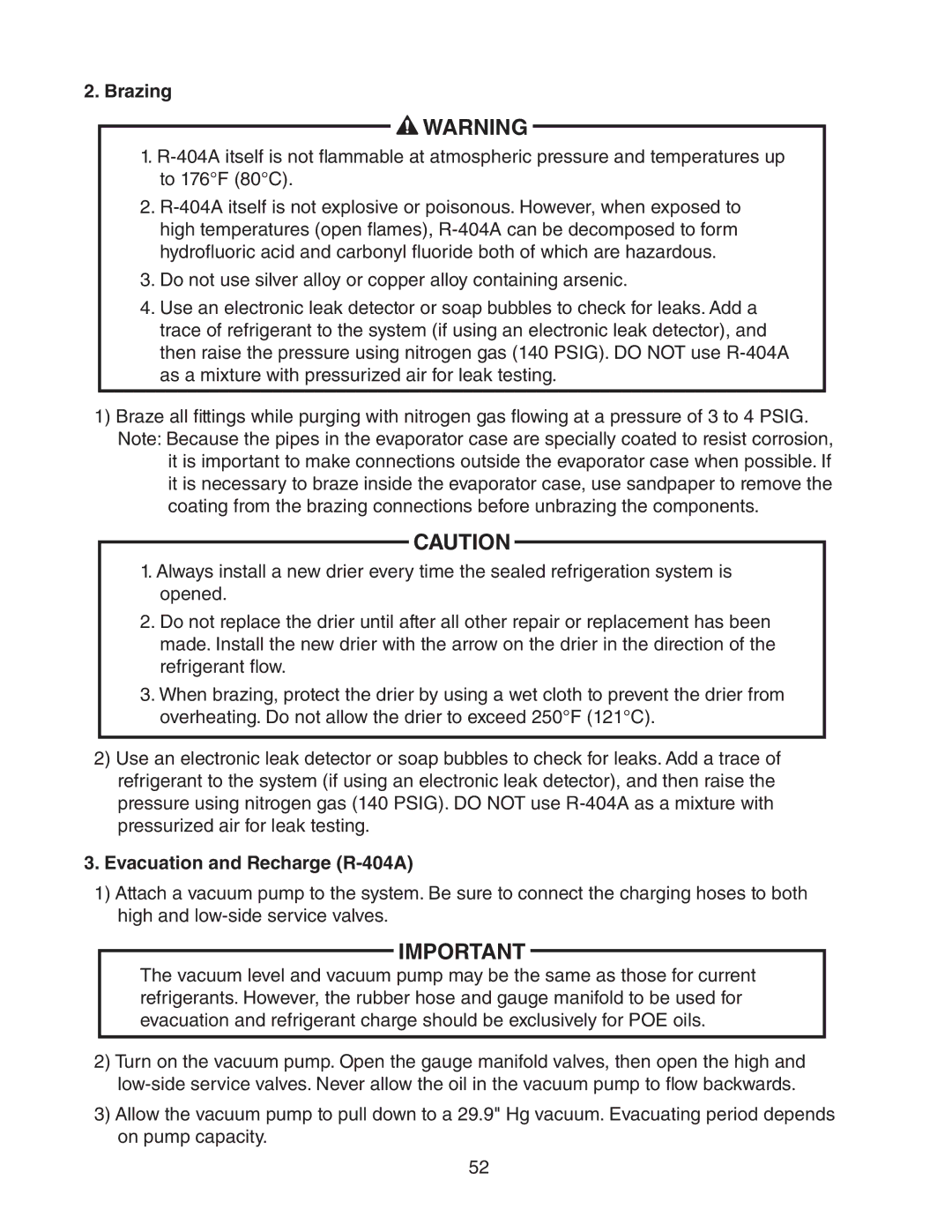
2. Brazing
![]() WARNING
WARNING
1.
2.
3.Do not use silver alloy or copper alloy containing arsenic.
4.Use an electronic leak detector or soap bubbles to check for leaks. Add a trace of refrigerant to the system (if using an electronic leak detector), and then raise the pressure using nitrogen gas (140 PSIG). DO NOT use
1)Braze all fittings while purging with nitrogen gas flowing at a pressure of 3 to 4 PSIG. Note: Because the pipes in the evaporator case are specially coated to resist corrosion,
it is important to make connections outside the evaporator case when possible. If it is necessary to braze inside the evaporator case, use sandpaper to remove the coating from the brazing connections before unbrazing the components.
CAUTION
1.Always install a new drier every time the sealed refrigeration system is opened.
2.Do not replace the drier until after all other repair or replacement has been made. Install the new drier with the arrow on the drier in the direction of the refrigerant flow.
3.When brazing, protect the drier by using a wet cloth to prevent the drier from overheating. Do not allow the drier to exceed 250°F (121°C).
2)Use an electronic leak detector or soap bubbles to check for leaks. Add a trace of refrigerant to the system (if using an electronic leak detector), and then raise the pressure using nitrogen gas (140 PSIG). DO NOT use
3.Evacuation and Recharge (R-404A)
1)Attach a vacuum pump to the system. Be sure to connect the charging hoses to both high and
IMPORTANT
The vacuum level and vacuum pump may be the same as those for current refrigerants. However, the rubber hose and gauge manifold to be used for evacuation and refrigerant charge should be exclusively for POE oils.
2)Turn on the vacuum pump. Open the gauge manifold valves, then open the high and
3)Allow the vacuum pump to pull down to a 29.9" Hg vacuum. Evacuating period depends on pump capacity.
52
